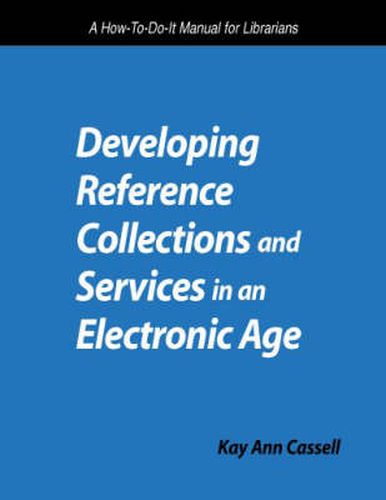Readings Newsletter
Become a Readings Member to make your shopping experience even easier.
Sign in or sign up for free!
You’re not far away from qualifying for FREE standard shipping within Australia
You’ve qualified for FREE standard shipping within Australia
The cart is loading…






The massive shift in how information is now published and collected has space, cost, and service policy implications for every library’s reference collection. This detailed how-to has two purposes: first, to help reference librarians plan, select, and develop these new collections; second, to help them rework their services in light of changing collections. Cassell discusses selection criteria (with examples), examines the future of the format in the reference collection, and the types of material (e.g.: full text encyclopedia or index). Readers are guided through the necessary collection development decisions, including the advantages and disadvantages of print vs. electronic media for content, content appropriateness for the format, demand, cost (required software and hardware), space (required equipment), time (installation), and the learning curve needed to use – and teach – new electronic reference tools. Details on reference book publishers and trends, recommended print and electronic evaluation tools, user and staff education, suggestions, model policies, checklists, forms, and planning tools for the new reference department complete this practical and essential manual.
$9.00 standard shipping within Australia
FREE standard shipping within Australia for orders over $100.00
Express & International shipping calculated at checkout
The massive shift in how information is now published and collected has space, cost, and service policy implications for every library’s reference collection. This detailed how-to has two purposes: first, to help reference librarians plan, select, and develop these new collections; second, to help them rework their services in light of changing collections. Cassell discusses selection criteria (with examples), examines the future of the format in the reference collection, and the types of material (e.g.: full text encyclopedia or index). Readers are guided through the necessary collection development decisions, including the advantages and disadvantages of print vs. electronic media for content, content appropriateness for the format, demand, cost (required software and hardware), space (required equipment), time (installation), and the learning curve needed to use – and teach – new electronic reference tools. Details on reference book publishers and trends, recommended print and electronic evaluation tools, user and staff education, suggestions, model policies, checklists, forms, and planning tools for the new reference department complete this practical and essential manual.